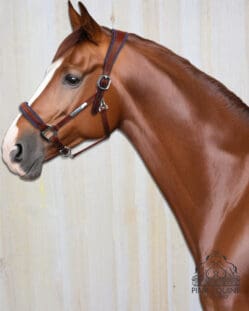Horse Head collars
New for 2024, Pink Equine personalised leather headcollar for horses features a new anatomical design and finer styled headpiece.
Available in the finest Italian, Black, Brown or Tan leathers and super soft padding and strong nickel plated buckles, customers can choose from over 30 different colours of piping and stitching.
Also new for 2024, the addition of a metal tag to engrave your horse or ponies name.
Click on the image below to purchase the new leather headcollar from Pink Equine.
Showing the single result

